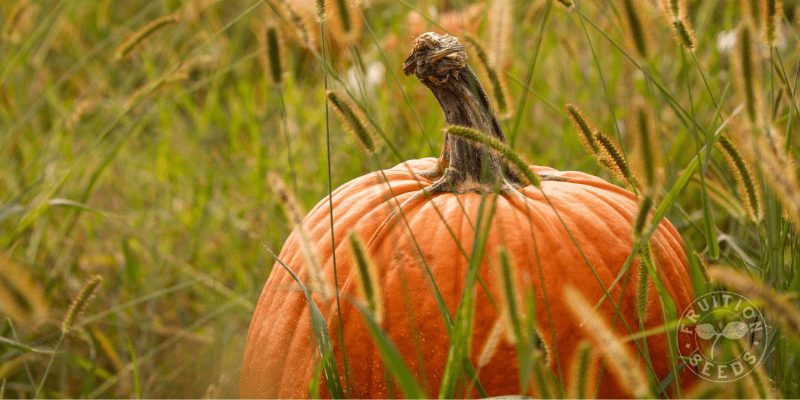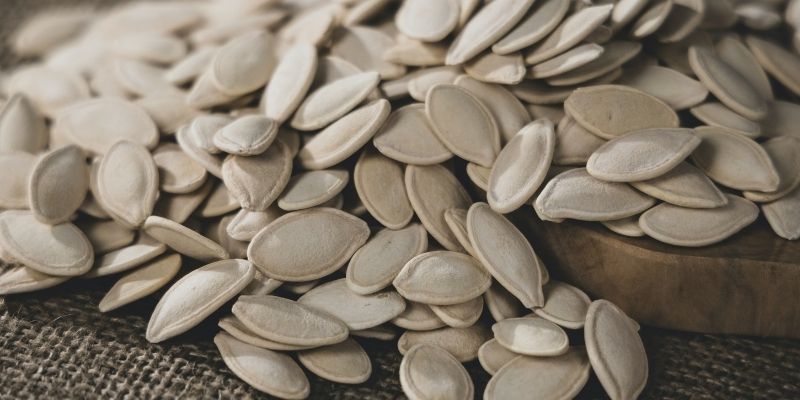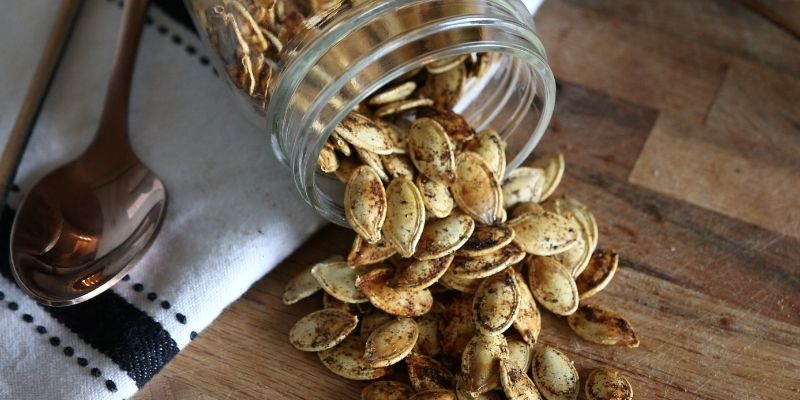So many folx have been asking if they can save the seeds they scoop out of their pumpkins to sow next season, which gives us such hope for the world! Whether pumpkins or winter squash, there are many things to do with the squash seeds you scoop, and saving seed (ironically!) is not at the top of the list, unless you know about its life history. Here’s a bit more of the story:
Why Home-Saved Pumpkin Seed May Not Grow True to Type
Many varieties are F1 Hybrids, which won’t grow true to type when saved. If you’ve bought your pumpkin from a grocer, farmer’s market or roadside stand, chances are good it’s an F1 Hybrid. So yes, they’ll grow, though the fruit they produce will most likely look nothing like what you’re expecting.
Even if your variety is open-pollinated and heirloom (like all of Fruition’s pumpkins), know all pumpkins will readily cross with other pumpkins and squash in its species, Cucurbita pepo, up to one mile. So unless you’ve grown the pumpkin and are confident it was isolated up to one mile from other pepos (or you hand-pollinated it), assume the seed has crossed and won’t grow true to type next season. Sigh.

If you’re up for an adventure and aren’t attached to the fruit being recognizable or delectable, save any and all seed! This is one of the ways new varieties are created in the world, which is so exciting as well as essential. Some people (like us!) save such seed intentionally as a means of cultivating greater diversity in the world…
…but if you’re attached to having orange jack o’lanterns and quaint acorn squash separate from your zucchini in seasons to come, you’re much better off sowing seed straight from the packet.

In brief, here are
Two Keys for Saving Pumpkin Seed:
- Knowing the genus/species of plants is key for seedkeeping! Most summer and winter squash grown in short seasons belong to one of three species: Curcurbita pepo, C. maxima and C. moschata. Pepo is the most diverse, including everything from zucchini to pumpkins, acorn to spaghetti squash, patty pan and delicata squash. And more!
- Varieties sharing a species will cross up to one mile, requiring ‘isolation’ to maintain seed that will grow ‘true to type.’ This isolation can be achieved with distance (check in with your neighbors!) or hand-pollination, which I’ll share more about in another post. Indeed, hand-pollination is one of our favorite way to paint ~
So yes, savoring your squash seeds rather than saving them may be the highest and best use of all the winter squash seeds you scoop this season! They are packed with protein and high-quality oils, plus scores of vitamins and minerals.

Here is the recipe we use:
Roasting Pumpkin Seeds
Rinse your winter squash seeds thoroughly, removing all pulp possible. And Friends, don’t hesitate to savor your delicata, butternut, hubbard squash and beyond: each one unique, each one delicious!
Optional and AWESOME: For the most crunchy yet melt-in-your-mouth seeds, soak them in a salty brine (2 teaspoons of salt per cup water) 12 to 24 hours prior to toasting. It seems superfluous, and sure it requires a touch more planning, but trust us: the results will ensure you never skip this step again! Thanks to our friends at Stony Brook Wholehearted Foods for sharing their delectable brilliance with us.
- Set oven to 350 F
- Toss each half cup of seeds with one teaspoon of oil
- Add salt, pepper and seasonings to taste
- Spread in a single layer on a baking sheet.
- Roast for ~20 minutes, til seeds are golden and starting to pop, stirring them once or twice to ensure even roasting.

Here are a few of our favorite seasonings:
– Rosemary
– Curry
– Herbs de Provence
– Red pepper flakes + maple syrup
– Za’atar (ground sesame, wild marjoram (also called za’atar) + sumac)
We love saving seeds, let us count the ways!
Sow Seeds & Sing Songs,

and the Many Beings of Fruition

